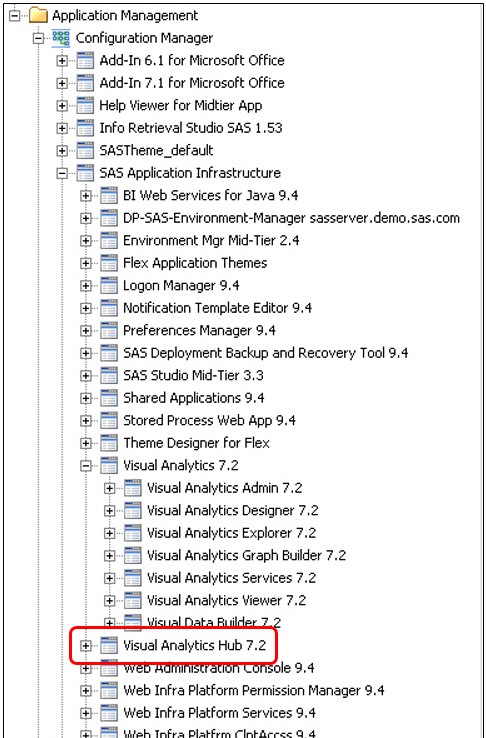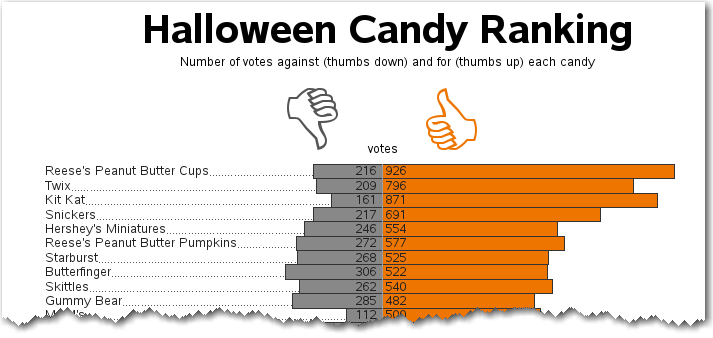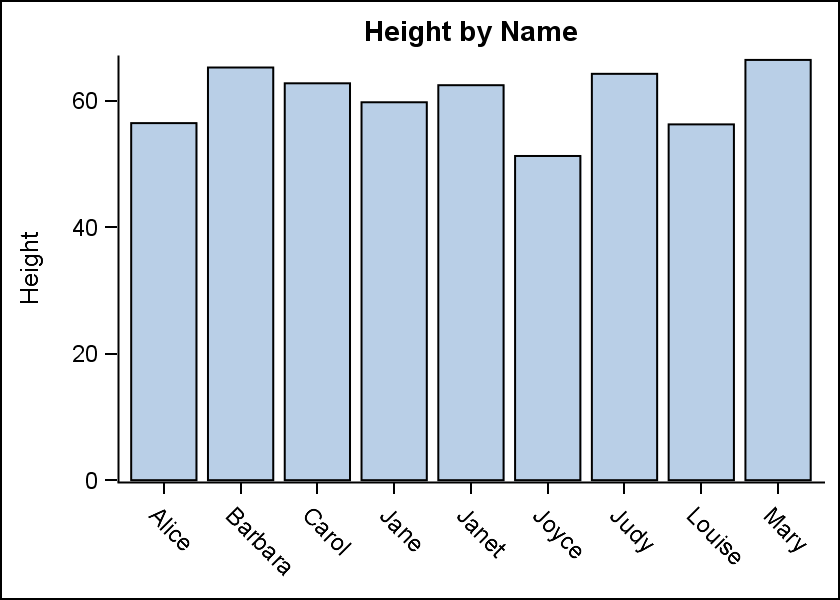All Posts

The Rule of Three is a writing principle that suggests that things that come in threes are inherently funnier, more satisfying, or more effective than other numbers of things – Wikipedia. 3 Ps of success, Blind Mice, Little Pigs, Stooges, Musketeers, The Matrix, The Lord of the Rings, rings, pairs

Jim Harris explains why it's especially important to assess the quality of metadata when it comes to big data.

As of Visual Analytics 7.2, the home page is designed to serve as the entry point for not only Visual Analytics, but also additional SAS applications and solutions. To this end, the SAS Visual Analytics home page is documented in both the SAS Visual Analytics Administration Guide and the SAS Intelligence

Today’s society is all about doing things faster, smarter, better—including the food industry. While on the surface this may sound like a great idea (who wouldn’t want cooking to be faster, smarter, better?!), in reality the luxury of today’s convenient processed foods comes with a price tag: your health.

In my first post of the analytics in real life blog series, we heard four higher education customers discuss using SAS and why they chose SAS. Today we will hear the following three customers share the positive impact of using SAS and analytics for their users and institution. Karl Konsdorf, Acting

My last post, Pitching analytics: recommendations on how to sell your story, discussed the steps I consider when winding up for an analytics pitch. In part 2 of this series I share the tips and tricks I have acquired for throwing strikes for during your analytics pitch. Like everyone, sometimes
La integración del Big Data en los procesos y programas de gestión de datos existentes se ha convertido en algo así como una llamada de alerta para las organizaciones en su afán de convertirse en empresas del siglo XXI. Jim Harris, blogger y obsesivo-compulsivo del Data Quality, nos da estos

Good news SAS users; you are a hot commodity. That’s the primary message Kirk Paul Lafler from Software Intelligence Corporation and Charlie Shipp of Consider Consulting Corporation delivered to a room full of users at MWSUG 2015. Citing figures from the Bureau of Labor Statistics and a recent CNN Money

It's that time of year again - time to choose what Halloween candy to buy for the trick-or-treaters! This is always a tough decision that has me angsting in the candy aisle. And if selecting the perfect candy wasn't enough pressure, my city (Cary, NC) was recently recognized as #1 on

You’ve read their books. You’ve probably even met them at conferences. But now, we’re revealing another side of our beloved SAS authors in this list of fun facts. Prepare to be surprised. Hint – one of the authors swims with sharks. Tricia Aanderud Tricia has over 100 jokes memorized -

With Big Data, there are far more technical questions than answers.

Pink and blue. These colors are often synonymous with gender. In fact, when I was pregnant 16 years ago, we had no idea of our baby’s sex. At the shower, we received lots of blue, green and yellow clothing, but no pink. It’s interesting how blue can represent both male

All axis customization features are always welcome. Especially since SGPLOT statements can often be used to create non standard graphs, having the ability to customize the axes is important. This article presents ways in which you can customize the discrete axes. By default, the x axis will try to display the

ビジネスに使える「良い予測結果」を得るために 今回は、8月にリリースされたSAS Forecast Serverの新しい機能を紹介しながら、データが理想どおりに画一的にはなっていない実際のビジネスの現場で「良い予測結果」を得るために必要な3つの要素についてご紹介します。 はじめに 需要予測はもともと、天候などの不確実なばらつきをもつ外的要因という制約のもとで、顧客満足度や販売機会を最大化(欠品による損失の最小化)しつつ、売れ残りや在庫保有といったコストを最小限にするための手段のひとつです。生産から販売までのリードタイムが長い商品の販売量の予測や、一定期間先の需要量の取引を行うエネルギーの売買に携わる企業にとっては、正確な需要予測が不可欠です。今回は、予測結果そのものの精度をビジネス上の課題解決に見合う精度にするために、欠かせない要素ついてご紹介します。 欠かせない三つの工夫 SASは長年、SAS/ETSやSAS Forecast Serverなど、時系列予測機能を提供してきましたが、それらツールを使用して実際に成果を出している企業に共通するのは、これらのツールに用意されている時系列予測アルゴリズムを単に使用するのではなく、精度を高めるためのなんらかの"工夫"をしているということです。それをまとめると以下の3つに集約されます。 予測対象の実績データ(以下、時系列データ)のセグメンテーション マルチステージ(他段階の)予測モデリング 予測結果の追跡 予測のためのアルゴリズムは世の中に多数存在しますが、それを単純に適用するだけでは、ビジネス上の意思決定に利用可能な精度を実現するのは実は困難です。従来は、上記3つの工夫をシステム構築の際に考慮し独自に仕組みを作りこむ必要がありました。SASはこれらをベストプラクティス化し、ツールそのものの機能としてリリースしました。新たにSAS Forecast Serverに備わった、それら3つの機能について簡単にご紹介します。 1.時系列データのセグメンテーション どの店舗でいつ何が売れるのかを予測しなければいけない小売業 客室の埋まり方を予測しなければならないホテル業 顧客満足度を落とさずに欠品率をコントロールするために、どの施設レベルで予測すべきかに頭を悩ませる流通業 エネルギーの使用量を予測しなければならないデータセンター事業者やエネルギー供給企業 乗客数や交通量を予測する航空関連企業 コールセンターの需要を予測して従業員の配置を計画する通信会社 など、どのような予測業務においても、最初のステップは、自社の時系列データがどのようになっているかを理解することです。 理想的な時系列データ 従来の予測技術にとって最も完璧な(うれしい)時系列データはこのような形(図1)をしています。量が多く、データ期間が長く、安定していて、同じパターンが繰り返され、欠損値がほとんどなくパターンが予測しやすいという特徴があります。 このような理想的な時系列データが仮に存在したとすれば、自動化された予測エンジンと単一の予測モデリング戦略で簡単に良い予測結果が得られます。 実世界の時系列データ しかし現実世界では、企業が保有する時系列データはもっと多様です(図2)。 洗剤のようにいつでも売れる安定した(Stable)需要 バーベキューセットのように季節性(Seasonal)のある需要 あるいはレベルシフト(Level Shift)があるような需要-例えば、市場や販売チャネルを拡大したタイミングなど- 新製品の投入や新市場への進出など、データ期間が非常に限定されている(Short History)。 自動車の特定の補修部品のようにスパースなデータ(あるいは間歇需要とも言います)(Intemittent)。 ハロウィングッズのように一年に一回のある週や月しか売れないものもあります(Holiday)。 このようにそれぞれまったく異なる時系列パターンに対して単一の予測モデリング戦略を適用しても良い予測結果は得られません。これらにどのように対処するかが「良い予測結果」を得られるかどうかの分かれ道になります。 時系列データのセグメンテーション この問いに対する解決策は、時系列データのセグメンテーションです。時系列データのセグメンテーションとは、時系列データのパターンに応じて異なるパターンに分類する方法です。これは、需要予測プロセスにおいて最も重要な最初のステップのひとつです。分類した後にそれぞれのパターンに応じた予測モデリング戦略を適用することが「良い予測結果」を得るための秘訣となります。 これにより、 Stableなデータに対しては、ロバストなARIMAモデルを適用し、 季節性を示すデータには季節性モデルを、 Level Shiftタイプにはレベルシフトの要素を説明変数に利用できるARIMAX手法を、 新製品パターンには類似性分析のテクニックを用い、 スパースなデータに対しては間歇需要のための予測モデルを、 Holidayパターンにはカスタマイズした時間間隔モデルを使用する

No one knows for sure who coined the term Big Data. Despite etymological studies, we are still no closer to attributing provenance to any one person, or indeed any one period. Some say the term was coined in the '80s, others believe the '90s – and many are convinced the term originated













